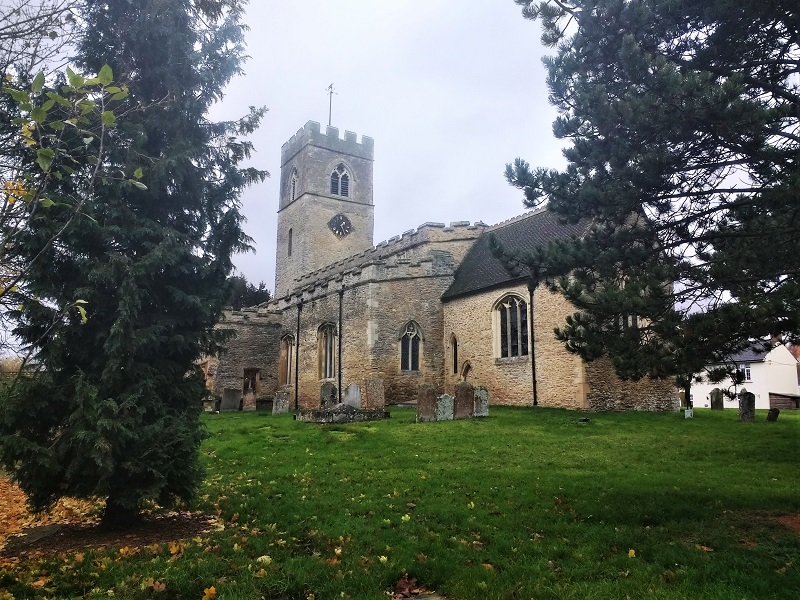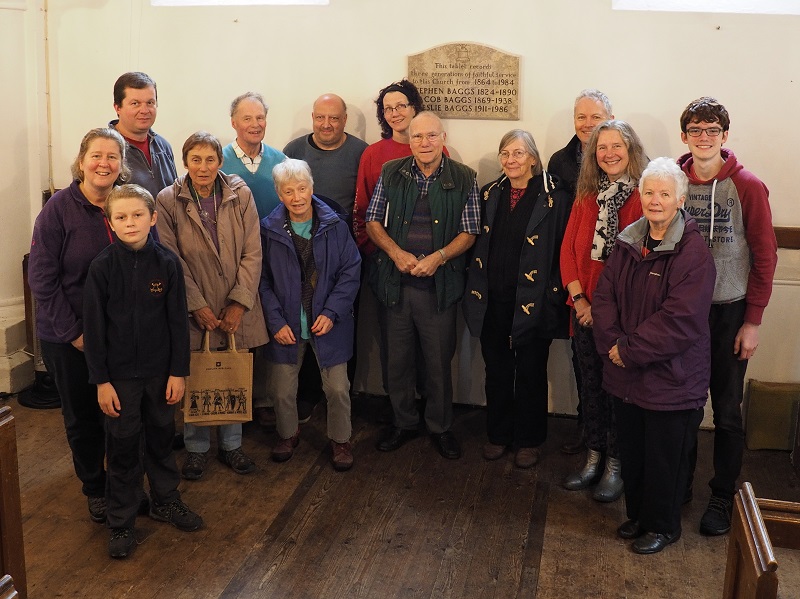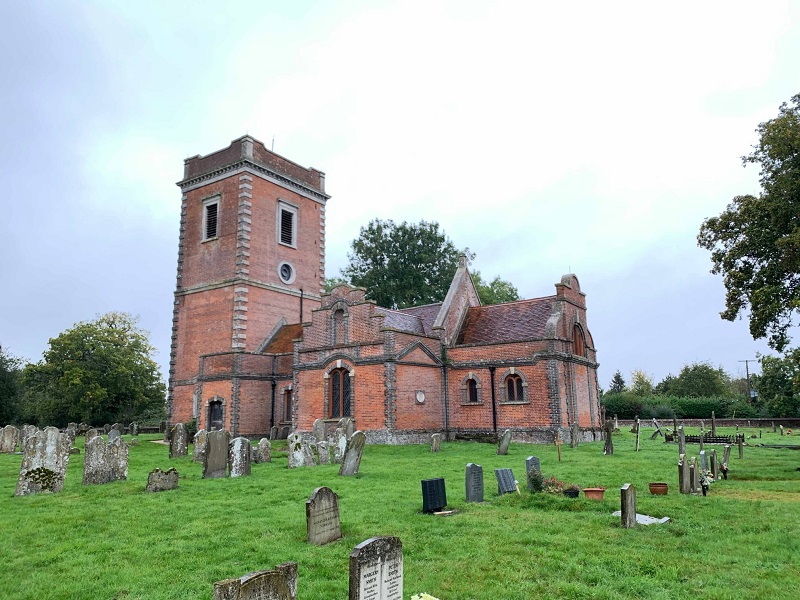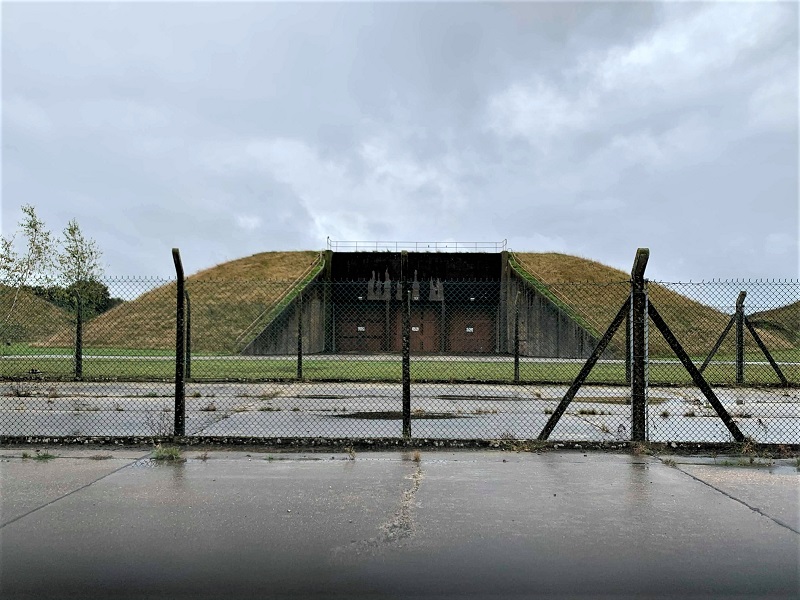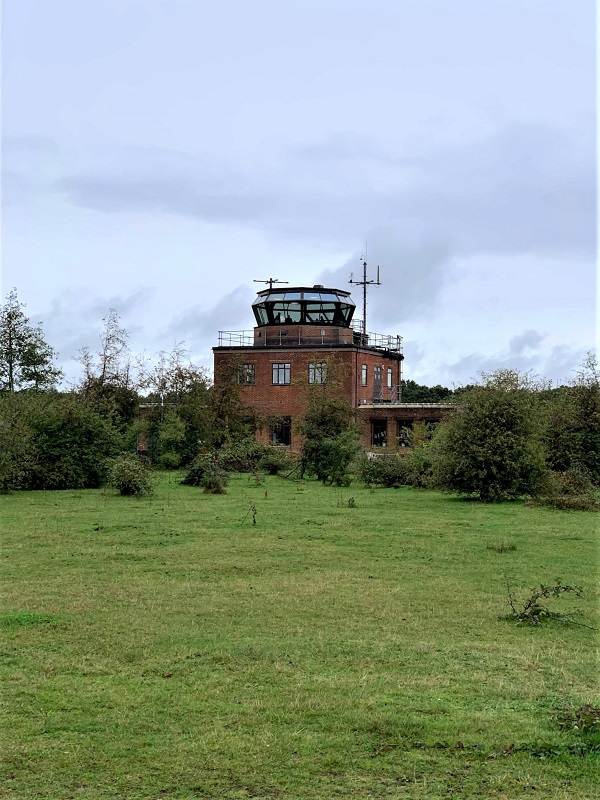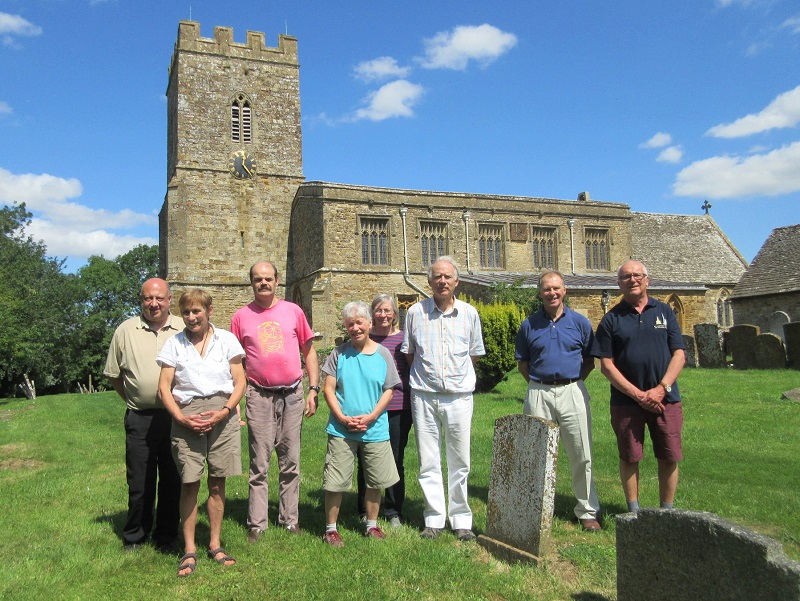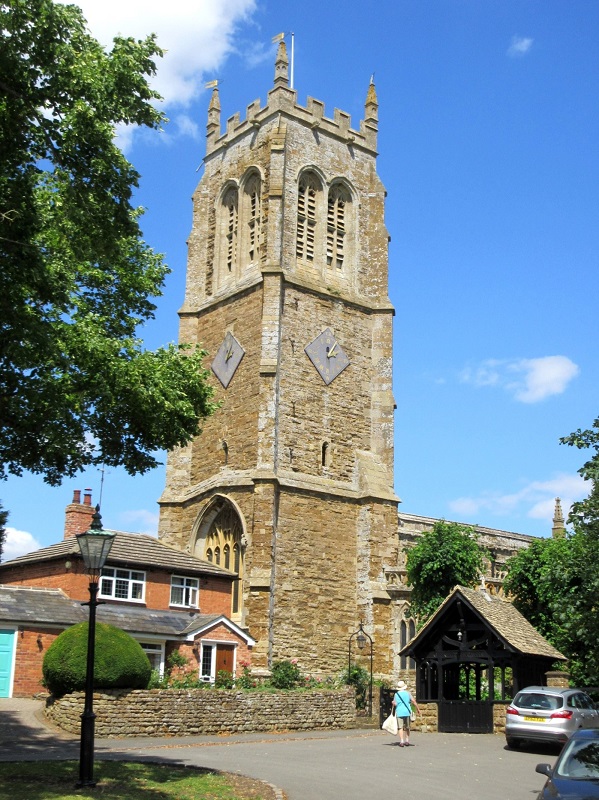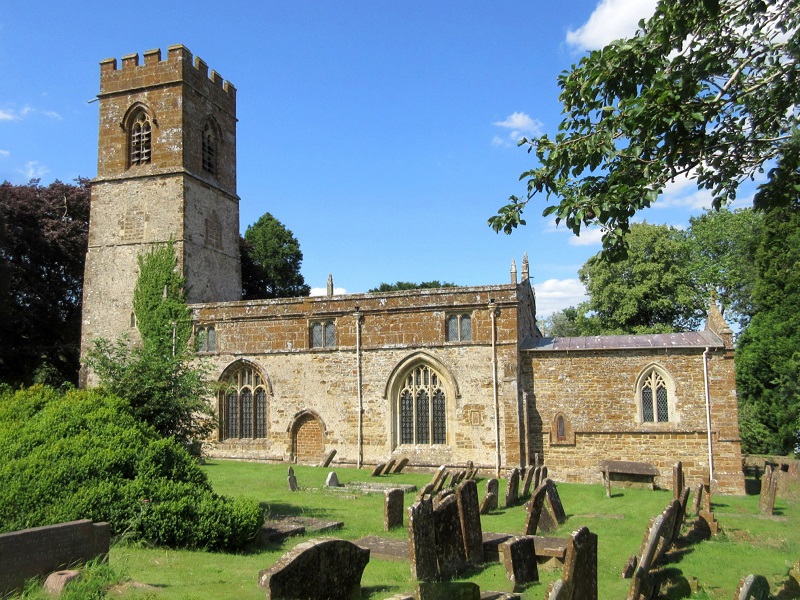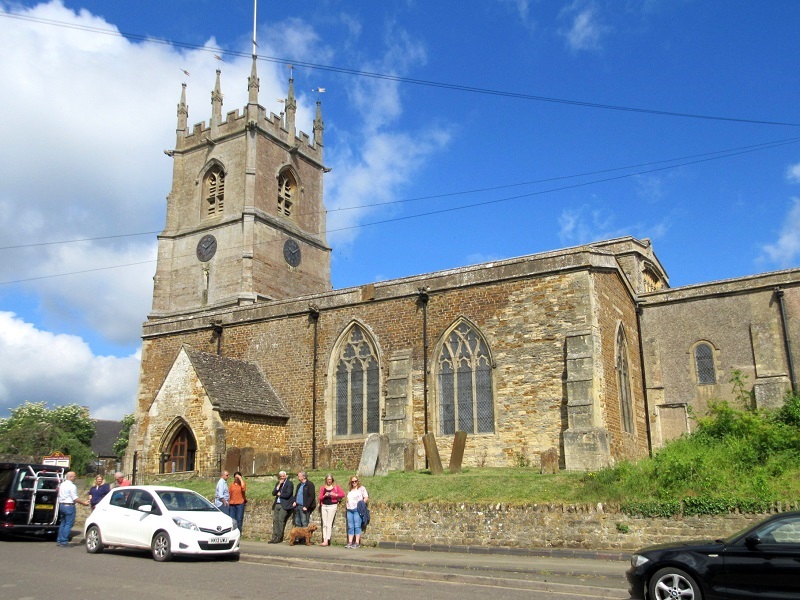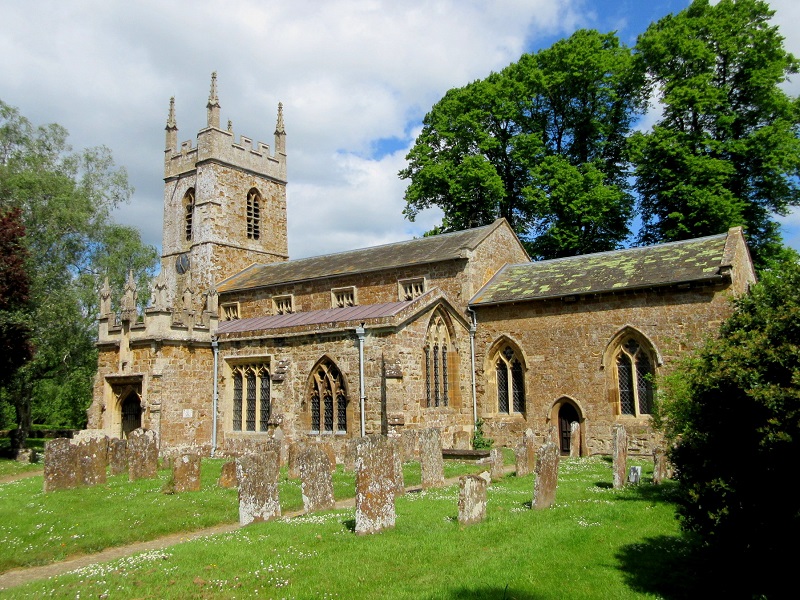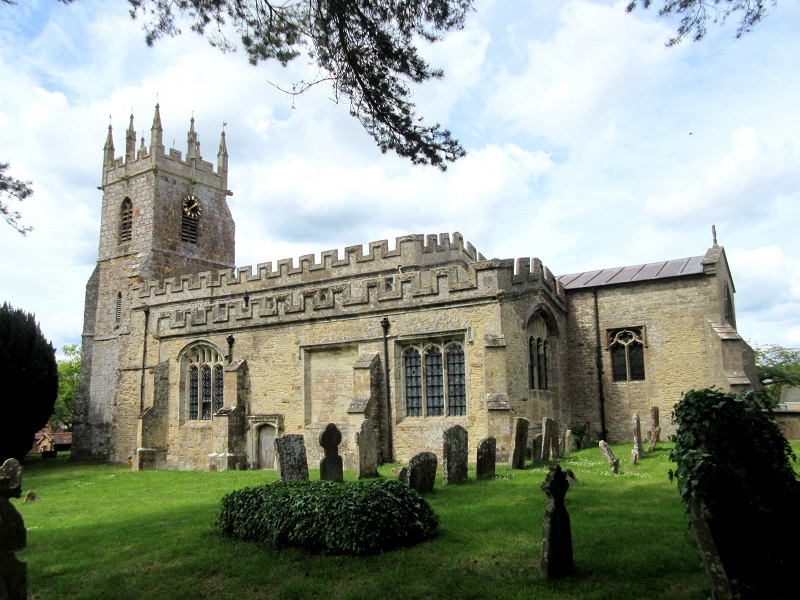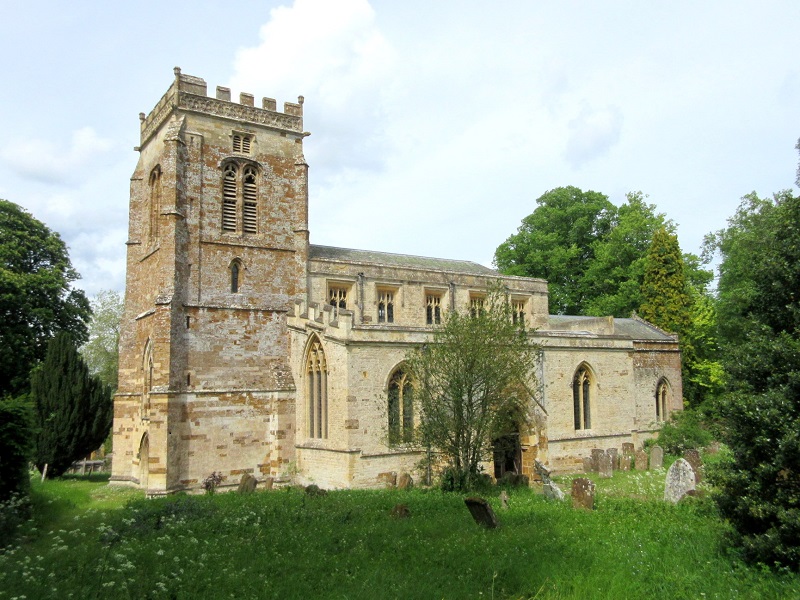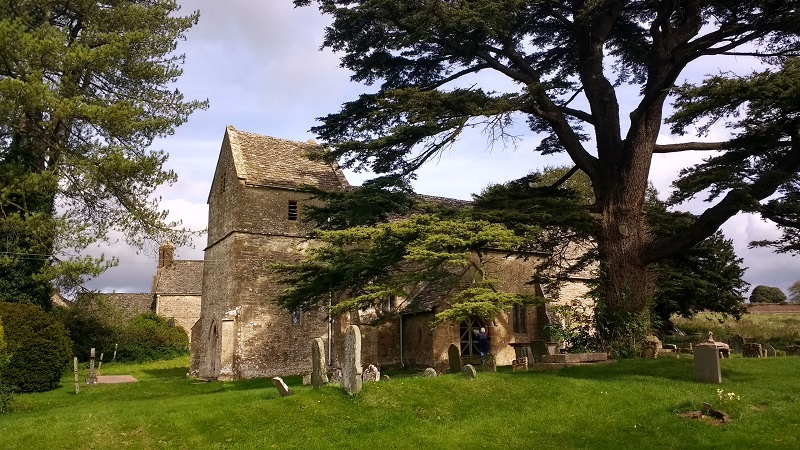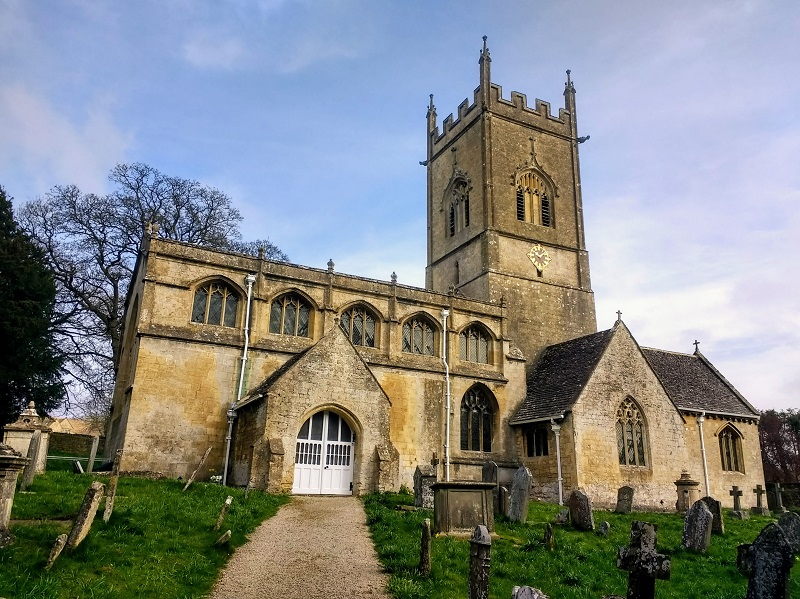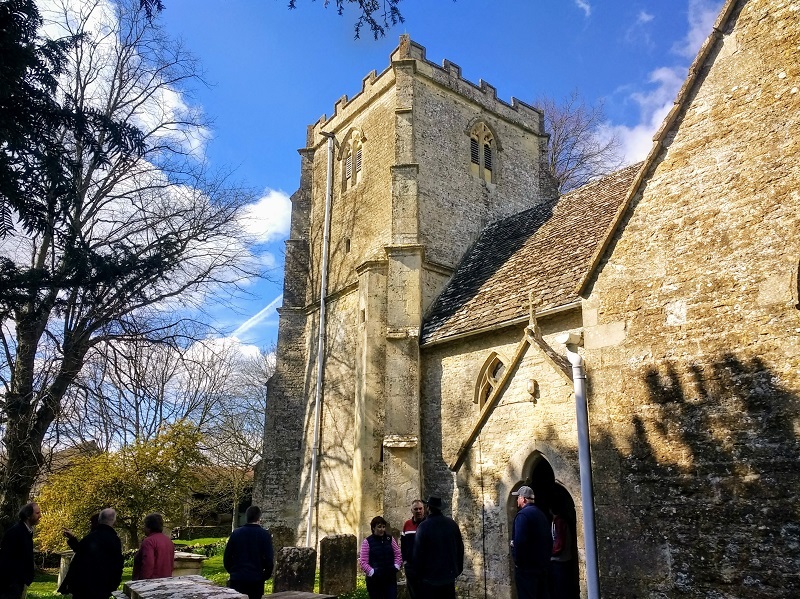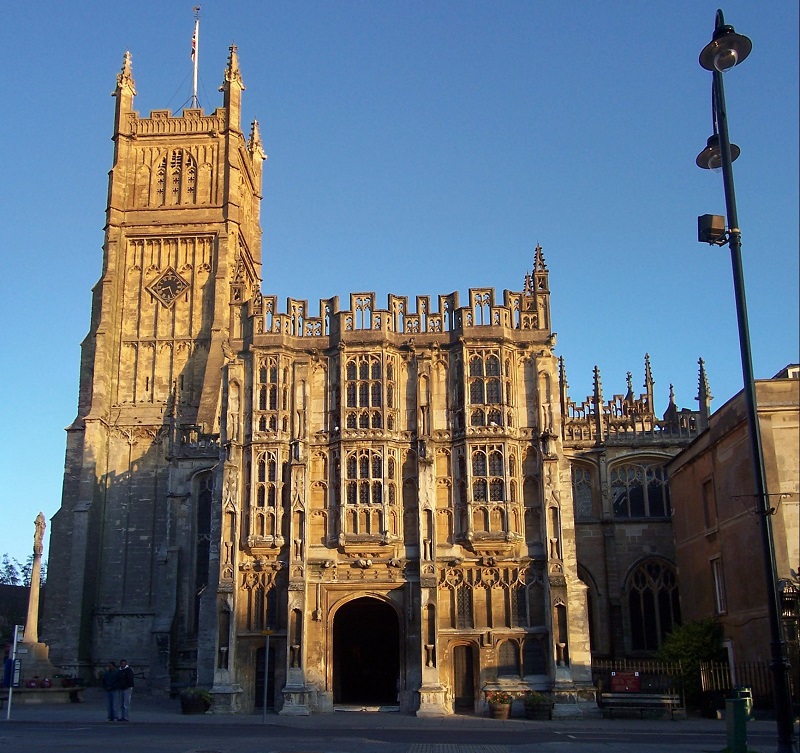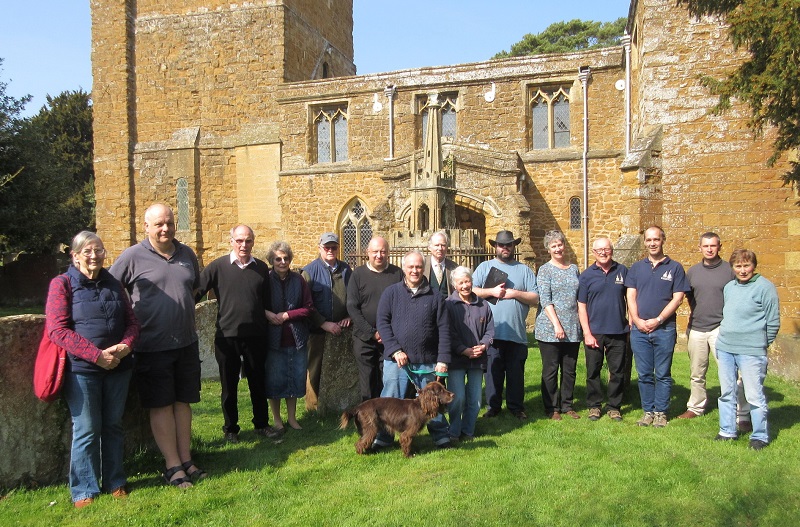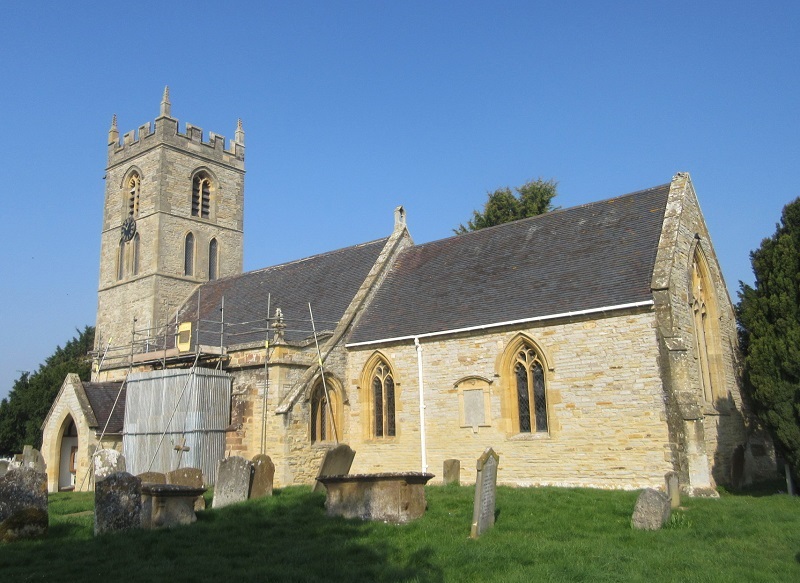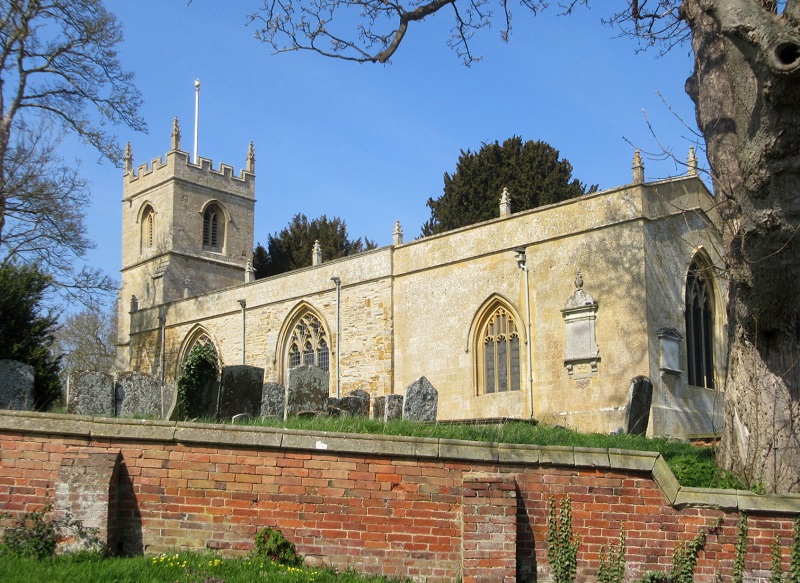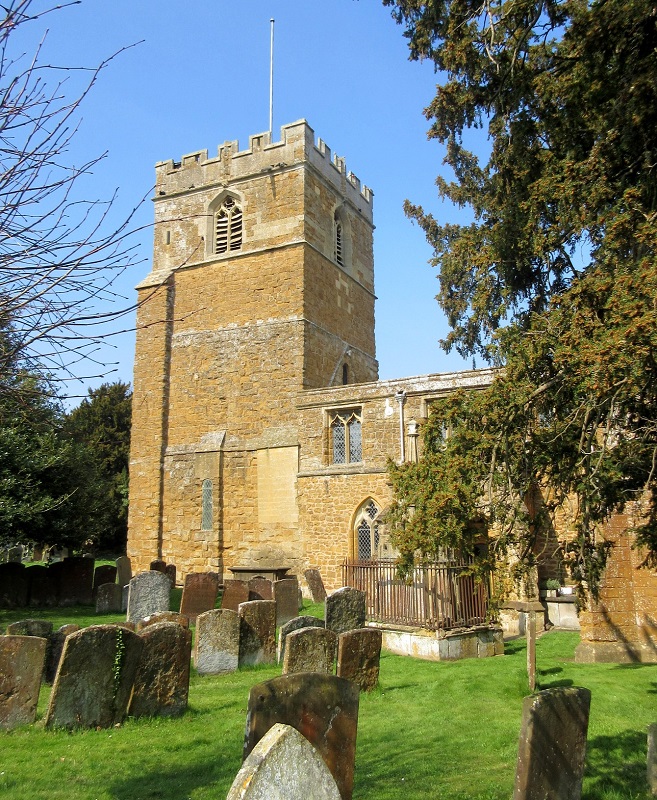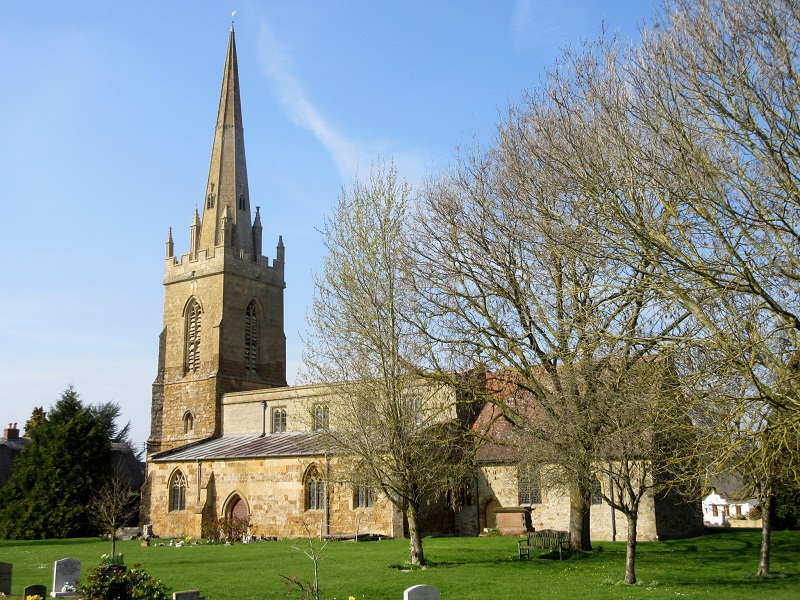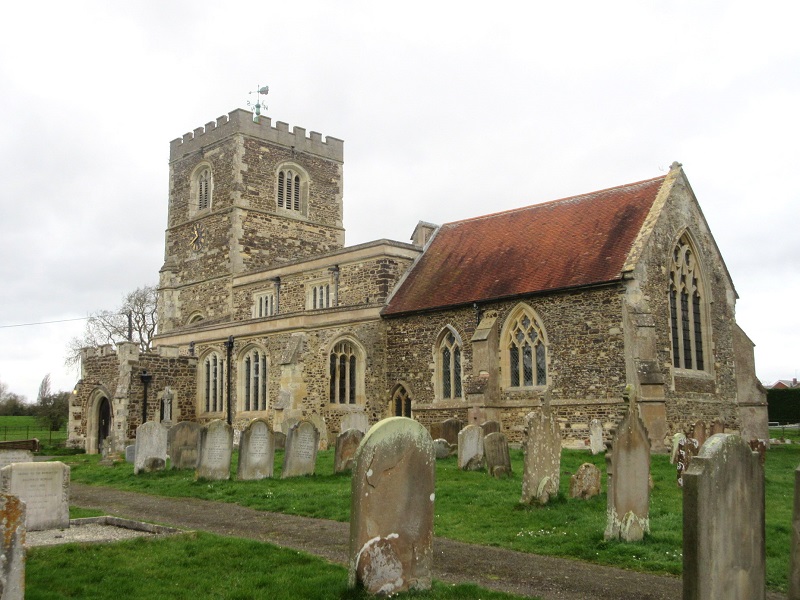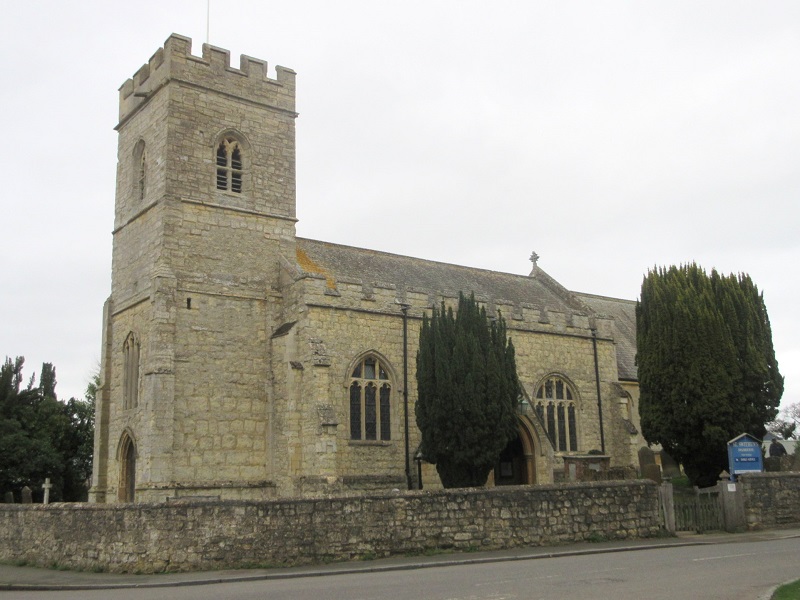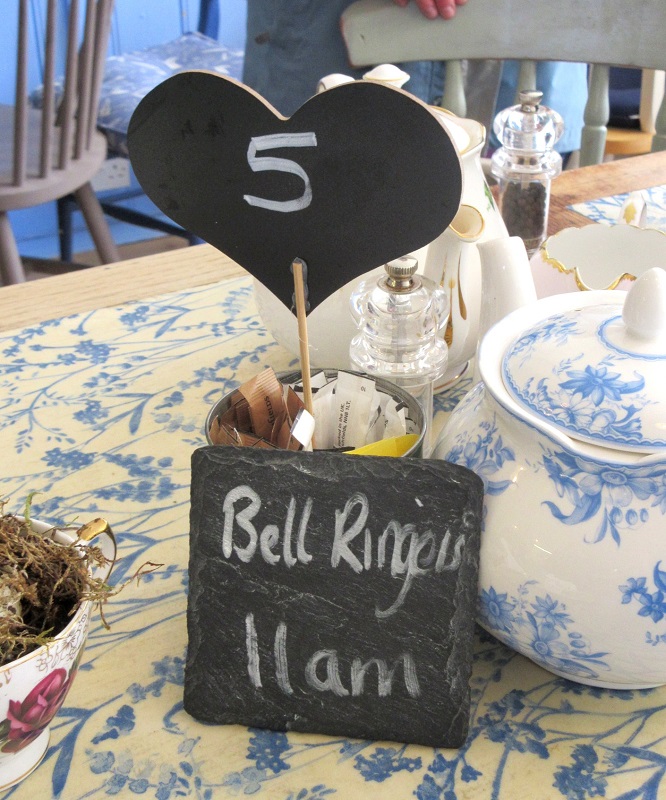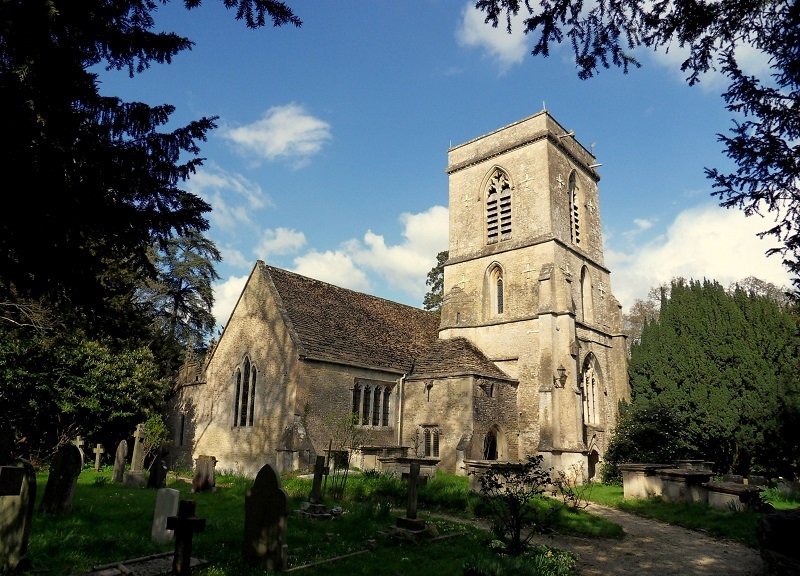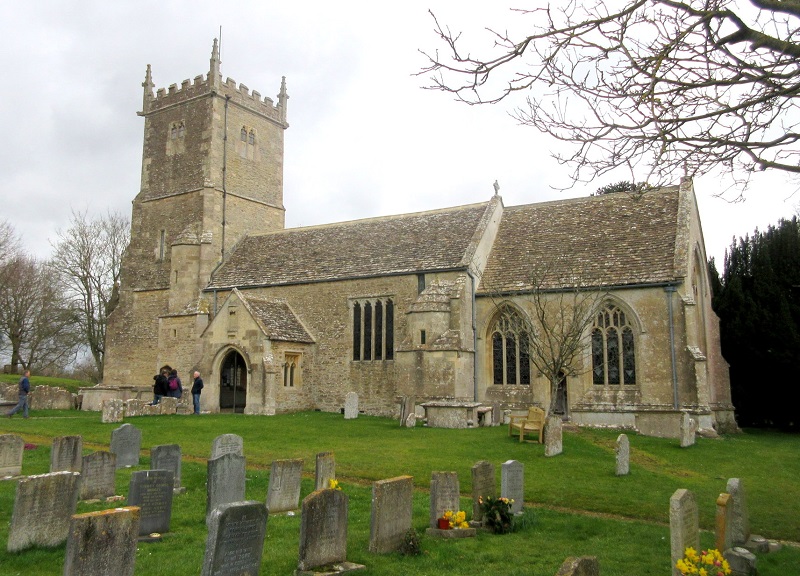A record of outings 2019
by Hugh Deam
Beds & Bucks
Saturday 23rd November 2019
John Hearn’s Autumn Outing
12:00 Stagsden
St Leonard (6) 10-2-18 in G · Beds MK43 8SH
13:15 Lavendon
St Michael (6) 10-3-3 in G · Bucks MK46 4EX
14:30 Teapots of Olney
31 High Street · Olney · Bucks MK46 4AA
15:45 Olney
St Peter & St Paul (10) 24-0-9 in D · Bucks MK46 4AD
17:15 North Crawley
St Firmin (6) 12-1-5 in F# · Bucks MK16 9LJ
Alan Barsby, Graham Cane, Harry Cane, Hugh Deam, David Endacott, John Hearn, Andrew Jones, Peter Jones, Judy Kirby, Gillian Loyd, Richard Loyd, Alison Merryweather-Clarke, Vicky Palmer, David Parkes, Benjamin Poole, Philip Roberts, Colin Taylor & Robert Tregillus
Stedman Caters, Grandsire Caters, Norwich Surprise Minor & Cambridge Surprise Minor
Stagsden derives its name from the Anglo Saxon description of a valley of stakes or boundary posts. The village is situated on the far western edge of Bedfordshire, with much of the housing along a central High Street. The parish church is Norman in origin, although rebuilt piecemeal from late medieval times, constructed of limestone rubble with ashlar dressings. The earliest bells (3 & 4) date to 1652, Anthony Chandler, Drayton Parslow. Tenor, 1684, Henry Bagley of Chacombe. Front two bells and fifth, 1932, Taylor, Loughborough.
Lavendon (Lafa’s Valley, Domesday Book, 1086) is the northernmost village in Buckinghamshire, with the land here having been a significant Saxon settlement. The Normans also made this a powerbase, with the de Bidun family constructing a motte and bailey castle and an abbey here in the 12th century. The parish church is also primarily 12th century, with the 4-stage tower housing six bells, the earliest four dating to 1689, Alexander Rigby, Stamford. The other two bells (1 & 5) are from Taylor, Loughborough, 1974.
Olney is one of England’s great market towns, having once been a centre for lace-making. It is most widely known today for its Shrove Tuesday pancake race from the market square to the parish church, a tradition which dates back to 1445. John Newton, the composer of the universally popular hymn Amazing Grace served as curate here and is buried in the graveyard. The 14th century church stands on the banks of the River Great Ouse, with its magnificent tower and spire topping out at 185ft. The sixth is the earliest bell, 1599, Newcombe of Leicester. Eighth, 1631, Robert Atton, Buckingham. The Bagley family foundry in Chacombe cast the fifth and tenor in 1682, and the seventh in 1699. Ninth, 1733, Thomas Russell, Wootton. There have been augmentations in 1903, Alfred Bowell, Ipswich and 2008, Whitechapel.
North Crawley was documented in the Domesday Survey as Crauelai (clearing frequented by crows). The monastery (St Firmin’s) that existed here from late in the 12th century lends its name to the dedication of the parish church, which itself pre-dates the now levelled monastery. The nave and west tower of the church date to around 1100. The earliest of the bells is the second, 1638, James Keene, Worcestershire. Fourth, 1652, Anthony Chandler of Drayton Parslow. Fifth (1824) and tenor (1948) both from Whitechapel. Treble and third by Alfred Bowell, Ipswich, 1907.
Hugh Deam
Outing to North Hampshire
Saturday 12th October 2019
by Hugh Deam and Richard Bennett
10:15 Hannington
All Saints (6) 5-0-16 in Db · Hants RG26 5TZ
11:30 Wolverton
St Catherine (6) 8-2-23 in Ab · Hants RG26 5RU
12:45 Greenham Common Control Tower Café
Burys Bank Rd · Hants RG19 8BZ
Left to Right: Janice Beale, Jonathan Beale, Christopher Beale, Susan King, Colin Taylor, Judy Kirby, Hugh Deam, Donna Bennett, Ron Burgess, Jane Hedges, Andrew Goldthorpe, Alison Merryweather-Clarke, Jane Burgess & Benjamin Poole (not in photo Simon King & Richard Bennett)
Single Oxford, St Clements, Single Canterbury, Plain Bob Minor & Stedman
Hannington derives its name from a local Saxon king who oversaw much of what is now known as the North Wessex Downs. The origins of the parish church are also Saxon, the present building being primarily Norman, with an aisleless nave and chancel rebuilt in the 15th century. The three-stage bell turret is 19th century, capped by a broach spire. The earliest three bells are all from the Knight family foundry that existed in Reading. Fifth, Henry Knight (1619), fourth, Ellis Knight (1624) and tenor, Henry II Knight (1680). Third, Gillett & Johnston, 1946. Treble and second, 2010, Bowditch & Higby, Bath.
Wolverton was part of a Royal estate from Saxon times, with the parish rolls documenting that Eleanor of Aquitaine resided in the royal household here during a period when her husband, Henry, was in France. The manor remained in Royal ownership until the 13th century when possession was given to the Fitzherbert family. In 1837 the manor was sold to the 1st Duke of Wellington. The present day Wolverton House is a late Georgian mansion. The parish church is situated close to the grounds of the manor house and dates to the early 18th century, with walling of red Flemish brickwork. The three-stage west tower houses six bells, the earliest being the second 1752, Lester & Pack, London. Fourth (1871), tenor (1950) and fifth (1997) all by Taylor’s, Loughborough. Treble (1900) and third (1920) by Mears & Stainbank.
Our entire party enjoyed lunch at the old RAF Greenham Common Control Tower which has fairly recently been converted into a museum and café after being left derelict since 1992, when the US Air Force left the site and the base closed. The observation deck offers an outstanding view of what used to be one of the longest airfield runways in Europe, but is now common land for all to enjoy.
Hugh Deam
Ironstone outing
Monday 29th July 2019
Warwickshire border by Colin Taylor
10:15 Hook Norton
St Peter (8) 20-2-13 in E · Oxon OX15 5NH
11:30 Whichford
St Michael (8) 12-3-23 in G · Warks CV36 5PG
13.00 Wyatts Garden Centre
Great Rollright · Oxon OX7 5SH
14:00 Brailes
St George (6) 29-0-19 in C · Warks OX15 5HU
15:15 Tadmarton
St Nicholas (6) 11-0-15 in G · Oxon OX15 5TD
Left to Right: Hugh Deam, Susan King, Michael Haynes, Judy Kirby, Jane Hedges, Simon King, Colin Taylor, Paul Lucas & (not pictured) John Hearn
Grandsire Triples, Buxton Minor, Little Bob Minor & Stedman Doubles
Lower Brailes is on the easterly side of the parish, which also includes Upper Brailes, Winderton and the deserted medieval hamlet known as Chelmscote. The River Stour forms the southern boundary and county boundary with Oxfordshire. The spelling of Brailes (burial place) remains unaltered since its inclusion in the Domesday Book. The church is constructed of coursed ironstone and has 12th century foundations, with the south aisle (1280) being the earliest part of the present building.
The church is known locally as “the cathedral of the Feldon” with the imposing 120ft high tower containing the third heaviest ring of six in the country. The earliest of the bells is the second, 1440, William Chamberlain, Aldgate. Treble, 1624, Richard Purdue of Closworth. Fifth, 1671, Richard Keene of Woodstock. Third & tenor, 1877, William Blews, Birmingham. Fourth, 1900, Mears & Stainbank.
The other towers in this outing have already been visited and documented on earlier occasions. Links to them are as follows:
Hook Norton Saturday 19th September 2009;
Whichford Saturday 11th March 2006;
Tadmarton Sunday 21st August 2011.
Hugh Deam
North Oxfordshire
Saturday 25th May 2019
by Michael Haynes
10:15 Hook Norton
St Peter (8) 20-2-13 in E · Oxon OX15 5NH
11:15 South Newington
St Peter ad Vincula (5) 8-0-7 in F# · Oxon OX15 4JG
14:00 Somerton
St James (8) 11-3-23 in F · Oxon OX25 6NB
15:00 Great Tew
St Michael & AA (8) 22-0-10 in D · Oxon OX7 4AG
Left to Right: David Parks, Hugh Deam, Jane Hedges, Sue Ross, Donna Bennett, Judy Kirby, Benjamin Poole, Susan King, Simon King, Michael Haynes & Paul Lucas
Grandsire Triples, Plain Bob Triples & Stedman Doubles
South Newington is quite a remote village, situated on the River Swere, having been documented in the Domesday Book (1086) as Niwetone (new farmstead). Evidence of a Romano-British settlement has been uncovered on the southern edge of the parish, a tract of land known as Iron Down. Even today buildings constructed of local limestone are still in the majority here. After the Dissolution, the Crown sold most of the land here to Magdalen College in Oxford. The dedication of the church is one of only 14 in England to St Peter ad Vincula ("St Peter in chains").
It was originally a small Norman church, but at the end of the 13th century it was greatly extended and a bell-tower added. The north aisle contains several fine wall paintings that date to the mid 14th century. The bells are rung from a gallery and reward concentration on tight handling. The earliest bell is the second, 1656, cast by Richard Keene, Woodstock. Treble, 1733, Henry II Bagley of Chacombe. The other three bells are from 1861, George Mears, Whitechapel.
For details of Hook Norton and Great Tew, see Saturday 19th September 2009.
Also, a previous trip to Somerton was made on Saturday 18th May 2013.
Hugh Deam
Gloucestershire
Saturday 6th April 2019
outing by John Hearn
09:30 Withington
St Michael (6) 11-0-24 in F# · Glos GL54 4BG
10:30 Compton Abdale
St Oswald (6) 6-3-4 in Ab · Glos GL54 4DS
11:30 Chedworth
St Andrew (6) 10-1-16 in G · Glos GL54 4AD
12:30 The Green Dragon
Coberley · Glos GL53 9NW
14:00 Winstone
St Bartholomew (6) 10-0-3 in Ab · Glos GL53 9PJ
15:20 Preston
All Saints (5) 6cwt in Bb · Glos GL7 5PR
16:45 Cirencester
St John Bapt (12) 27-1-16 in C# · Glos GL7 2PE
Left to Right: Adrian Nash, Mary Carroll, Paul Smith, Graham Cane, Harry Cane, Hilda Shipp, Benjamin Poole, Alan Barsby, Debbie McLaren, Susan King, John McLaren, Paul Washington, Hugh Deam, Darren Washington, Vicky Palmer, Donna Bennett, John Hearn, Phillip Roberts, Simon King, David Endacott, Shan Nash & Brian Shacklady
Plain Bob Royal, Grandsire Caters, London Minor, Norwich Minor, Cambridge Minor & Double Oxford
Withington and Chedworth See the previous outing on Saturday 10th May 2003.
Compton Abdale See Saturday 30th September 2007 for further details.
Winstone (Wynna’s boundary stone) is situated just north-west of Cirencester and close to the Roman road of Ermin Street.
The Grade 1 Listed parish church remains largely untouched since the 11th century, although the chancel was partially rebuilt late in the 19th century. Two of the bells in the tower are of significant age, the fourth dating to 1360 and cast at a foundry in Gloucester. The tenor is from fifty years later and cast in a Worcester foundry.
These two bells were the original treble and third before the rehang of 1979. The other four bells are all by Thomas Rudhall, Gloucester, 1776.
Preston (one of England’s most common toponyms) derives its name from a farmstead administered by priests, and is located adjacent to the River Churn.
Today the village is perilously close to becoming a suburb of Cirencester, but an organic farm here, with shop and café, helps maintain a sense of rurality. The late Norman church here is Grade 2 Listed, dating to the 13th century, with a west tower housing five bells. The back four bells are all from 1787, Thomas Rudhall, Gloucester. The treble was added in 1908 by Llewellins & James, Bristol.
Cirencester is the unofficial capital of the Cotswolds, having been one of the most important Roman towns in the country, being known at that time as Corinium. The town centre is dominated by the presence of St John the Baptist church, a mighty building that amply evidences the centuries of wool trade influence on this area. Only the third bell (Abraham II Rudhall, Gloucester, 1713) remains intact from the original ten bells, the rest having been recast over the years, mostly by the Rudhall family later in the 18th century. The bells were augmented to twelve in 1722 by the same foundry. Ninth and eleventh recast in Loughborough, 1895 and 1952 respectively. Tenor recast by Whitechapel in 1986.
Hugh Deam
Warwickshire
Saturday 30th March 2019
by Harry & Graham Cane
10:30 Welford on Avon
St Peter (8) 9-3-1 in G# · Warks CV37 8EN
11:40 Preston on Stour
St Mary (3) 8cwt in Bb · Warks CV37 8NQ
12:15 Ilmington
St Mary (8) 12-3-26 in E · Warks CV36 4LB
13:00 The Red Lion
Front St · Ilmington · Warks CV36 4LX
14:30 Lower Quinton
St Swithin (6) 13-0-27 in F# · Warks CV37 8SG
15:40 Great Wolford
St Michael & AA (6) 11-3-7 in F# · Warks CV36 5NQ
16:25 Long Compton
St Peter & St Paul (6) 12-0-22 in F · Warks CV36 5JJ
From left: Jane Hedges, Andrew Usborne, Peter Payne, Marilyn Payne, Graham Cane, Hugh Deam, Barry Wateridge with Darcy, Simon King, Judy Kirby, Harry Cane, Elizabeth Mullett, Paul Lucas, Steve Millington, Alan Bainbridge & Susan King
Cambridge Major, Stedman Triples & Grandsire Triples
Welford on Avon (ford by the springs) was documented as Welheford in 1177, situated as it is within a loop of the River Avon. During the 11th century the estate was granted to Deerhurst Priory by the Earl of Gloucester. It is renowned for its superabundance of elegant 17th century thatched cottages, images of which are widely featured on generic calendars and postcards of England. The parish church dates to around 1330, built on the site of its 12th century predecessor. The back six bells are all from 1960, cast by Taylor’s of Loughborough, with the front two added by them in 1980.
Preston on Stour was originally in Gloucestershire, transferring in 1931. The original medieval church was rebuilt in the grand Gothic Revival style during the 18th century, although the 15th century tower remains. The bells are rung from a large gallery at the west end of the church. The second (1635) and third (1653) bells were both cast by Henry Bagley of Chacombe. The treble dates to 1713, Abraham Rudhall, Gloucester.
Ilmington takes its name from the profusion of elm trees that once dominated the hills in this area, the village sitting at the foot of both Campden Hill and Windmill Hill, with residents being known as Ilmingtonians.
The former Catholic church on Upper Green has in recent years been converted into a thriving community shop and café. The church is most notably of the 12th and 14th centuries. The back five bells are from 1641, Henry Bagley of Chacombe. Third, 1921, Thomas Bond, Burford. Front two bells added in 2000, Taylors, Loughborough.
Lower Quinton was part of a royal estate in Anglo-Saxon times, being described as Quentone (Queen’s farmstead) in 848AD. The church is primarily 14th century, although its 12th century origins are visible in the arches of the south nave arcade. The three oldest bells are all from the Rudhall family foundry in Gloucester, the second being the earliest (1714), with treble and tenor from 1743. Third and fourth, 1842, Thomas II Mears, Whitechapel. Fifth, 1952, Taylors, Loughborough.
Great Wolford See Saturday 11th March 2006 for details.
Long Compton See Saturday 2nd April 2016 for further details.
Hugh Deam
Quarter Peal Day in
Buckinghamshire
Buckinghamshire
Saturday 16th March 2019
Arranged by Hugh Deam
10:00 Soulbury
All Saints (6) 15-0-21 in E · Bucks LU7 0BX
11:30 Drayton Parslow
Holy Trinity (6) 9-1-1 in Bb · Bucks MK17 0JF
12:45 The Betsey Wynne
21 Mursley Rd · Swanbourne · Bucks MK17 0SH
14:30 Swanbourne
St Swithun (6) 12-1-24 in F · Bucks MK17 0SR
15:30 Whaddon
St Mary (6) 14-2-21 in G · Bucks MK17 0LZ
Left to Right: Harry Cane, Michael Haynes, Benjamin Poole, Hugh Deam, Paul Lucas, Graham Cane, Judy Kirby, Michael Probert & Colin Taylor
Quarter Peals: None · 1260 Single Oxford & Plain Bob Minor · Plain Bob Minor · Grandsire Doubles
Soulbury was noted as Soleberie (a stronghold by a gully) in the Domesday Book and today the parish encompasses no fewer than seven hamlets. The 17th century mansion of Liscombe Park was originally the seat of the Lovett family. Colonel John Lovett was patron of the Eddystone Lighthouse off the Cornish coast, this being the world’s first open ocean lighthouse. The church here was largely rebuilt between the 14th and 16th century, the tower dating to the 15th century. The fourth and fifth bells (1450) survive from this time, cast in Wokingham. Tenor, 1592, Bartholomew Atton, Buckingham. Second by the Chandler family, Drayton Parslow, 1613. Treble, 1661, Henry II Knight, Reading. Third, 1936, Mears & Stainbank. Ringing on a more regular basis had resumed relatively recently and unfortunately an already cracked stay fell out prior to our starting the quarter attempt.
Drayton Parslow derives its name from the drays that were used in the early farmstead here and owes its manorial affix to the Passelewe family, here from the 11th century. During the 16th and 17th centuries the village had its own bell foundry which was run by the Chandler family. The parish church is primarily 14th century with a 15th century tower. Within the church is an alabaster panel depicting the Crucifixion that was carved in 1430 and is considered of even greater rarity than the example in Oxford’s Ashmolean Museum. The earliest of the bells is the tenor, 1591, Bartholomew Atton, Buckingham. All of the other bells are by Taylors, (4 & 5 – 1842), front three from 1935.
We lunched at The Betsey Wynne, a relatively new pub (2006) which is named after a matriarch of the Fremantle family and built on a field that was known as Spuddle Spits.
Swanbourne takes its name from the swans on the stream here, with, for many centuries, much of the surrounding lands having been administered by Woburn Abbey or the Crown. The 13th century church and manor house are set on opposite sides of the crossroads in the village. Swanbourne House was the home of the Fremantle family who gave their name to the coastal city in Western Australia and subsequently that country’s most famous cooling summer breeze, the Fremantle Doctor. There is also a district in Perth, Western Australia named Swanbourne. The church tower was rebuilt in the 16th century, with the oldest bells being the second and tenor, cast by Anthony Chandler, Drayton Parslow, 1654. Fourth and fifth, 1863, John Warner, London. Treble and third, 1910, Alfred Bovell of Ipswich.
Whaddon See Saturday 19th March 2011 for details.
Hugh Deam
Outing to Wiltshire
Saturday 2nd March 2019
Organised by David Parks
10:30 Kington
St Michael (6) 12-1-24 in F · Wilts SN14 6JA
11:30 Folly Row Café
Kington St Michael · Wilts SN14 6JB
13:30 Langley Burrell
St Peter (6) 10cwt in G · Wilts SN15 5LY
14:30 Great Somerford
St Peter & St Paul (6) 8-0-5 in G · Wilts SN15 5JB
Left to Right: Alison Merryweather-Clarke, Benjamin Poole, Donna Bennett, Paul Lucas, Simon King, Susan King, David Parks, Judy Kirby, Hugh Deam & Colin Taylor
Cambridge, Buxton, St Clements, Plain Bob Minor, Stedman, St Osmund & All Saints
Kington St Michael was first documented in AD 934, with its original affix being Minchin, denoting the priory here at that time. A rededication to St Michael took place in 1279. The village stands on a limestone outcrop and its central layout clearly gives evidence to its sheep market heritage. The church is primarily 13th century in its construction, standing on high ground overlooking what would have been the market square. The tower dates to the 18th century, with all of the bells cast by Abraham II Rudhall of Gloucester, 1726, and hung counter-clockwise.
A superb early lunch was enjoyed at the Folly Row Café, which is situated on the High Street in Kington St Michael. Opened in 2015, the café looked after us splendidly, with everyone being thoroughly impressed with the exquisite chinaware and lovely décor as well as the food and drink.
Langley Burrell See Saturday 27th April 2013 for details.
Great Somerford is situated on the southern bank of the River Avon, between the limestone belt of the Cotswolds to the north and the chalklands of the Marlborough Downs to the south. The parish also includes the hamlets of Startley and Seagry Heath.
The allotments in the village are considered to be the first sanctioned in Britain, established in 1809 by Reverend Stephen Demainbray, vicar here at that time. Their 200th anniversary was marked in 2009 by Radio 4’s Gardeners Question Time recording an edition from here. The Grade 1 Listed 15th century parish church stands on the site of an earlier building, having been dedicated to St Michael and All Angels until late in the 19th century. The churchyard to the rear of the church slopes down to the River Avon, with the larger churchyard at the front accessed via a path that runs past the 16th century Mount House. This was originally the manorial home of the Maltravers family who were the primary landowners locally from medieval times. The date of casting of the bells stretches from the earliest in 1480 (5 – Richard Thomas) to the most recent in 1984 (Treble – Taylors). Most unusually, the fifth bell is actually heavier than the tenor.
Hugh Deam

